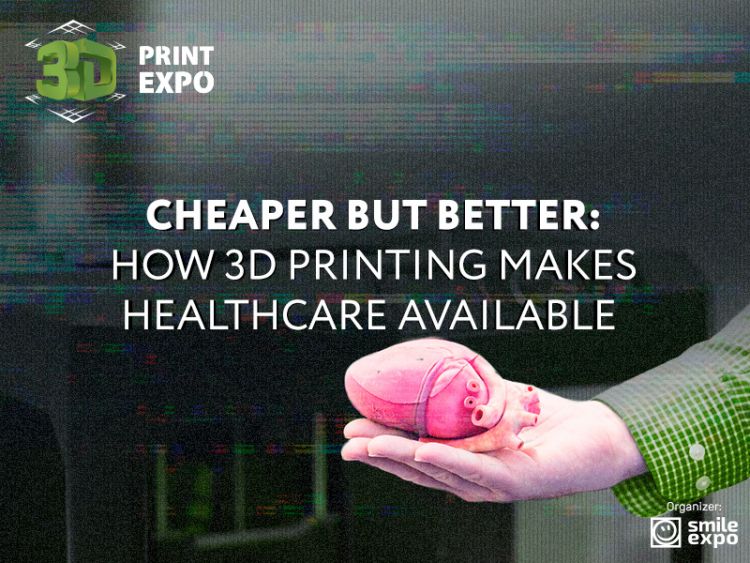Cheaper but better: how 3D printing makes healthcare available

An economical model of 3D laboratory in the North Manchester General Hospital has proven that additive technologies allow clinics to save dozens of thousands of dollars. It is faster to print vessels and new skin than to look for donors. Besides, surgeons spend less time for the implantation of such objects.
Due to 3D printing, medicine can be cheaper and commonly available. The article reveals why additive biological technology saves doctors’ time and describes solutions emerged in 2018.
Printing of thinnest blood vessels
Currently, there are a lot of 3D printers producing items using sugar. Such objects can be applied in various sectors: from the confectionary to consumer industry. This solution is also used in the biotech sector: sugar is able to take so thin shape that one can create cylinders and tunnels similar to blood vessels.
Advantages of the sugar implantation method include the low risk of tissue breakdowns, which will facilitate the patient healing period after surgery.
At the same time, the very few people still may afford the 3D printer. It is difficult to obtain the work material out of sugar: it crystallizes very fast when cooling, burns when overheating, and loses its shape under the heavy pressure. To keep the material within the average temperature and pressure, one requires a powerful printer and a skilled specialist. All of this is quite expensive.

However, in May 2018, scientists from the University of Illinois designed a 3D printer based on isomalt, a sugar substitute with a lower degree of crystallinity. It is cheap and produced out of ordinary beetroot. Besides, it is natural and healthy: the substance is frequently added in throat lozenges in order to sweeten the treatment.
Professor Rohit Bhargava from the healthcare center in Illinois states that isomalt 3D printing can help patients to recover from heart and brain illnesses.
Cultivation of eye cornea
According to the World Health Organization, around 253 million people suffer from the gradual loss of vision, with 36 million of them going blind. There are not many donor materials for eye cornea implantation, but the Newcastle University is going to solve this issue.
Scientists have created bioink allowing to print an eye cornea in 10 minutes. Scholars’ main achievement was the following: 90% of cells were viable after printing, while 83% of them survived to the sevenths day.
Prior to that, none of scientific groups have managed to gain such results. The university staff supposes that an eye cornea implant will be affordable for the mass use in five years of clinical testing.
Printing of new skin right on the body
Deep burns damage all three layers of the skin: epidermis, dermis, and hypoderm. Thus, doctors transplant a new skin. Such a plastic operation requires a huge amount of the healthy skin, but there are not enough donors.
3D printing allows to obtain as much skin for patients as they need. Scientists from the University of Toronto have designed a 3D printer allowing to print skin right on the burn wound. In average, a similar operation will last 2-10 minutes, while a common one lasts approximately 15-60 minutes.
3D printing saves time for object creation: whether it be a manufacturing element or a microcirculation vessel. As we know, every minute counts in the healthcare sector.







